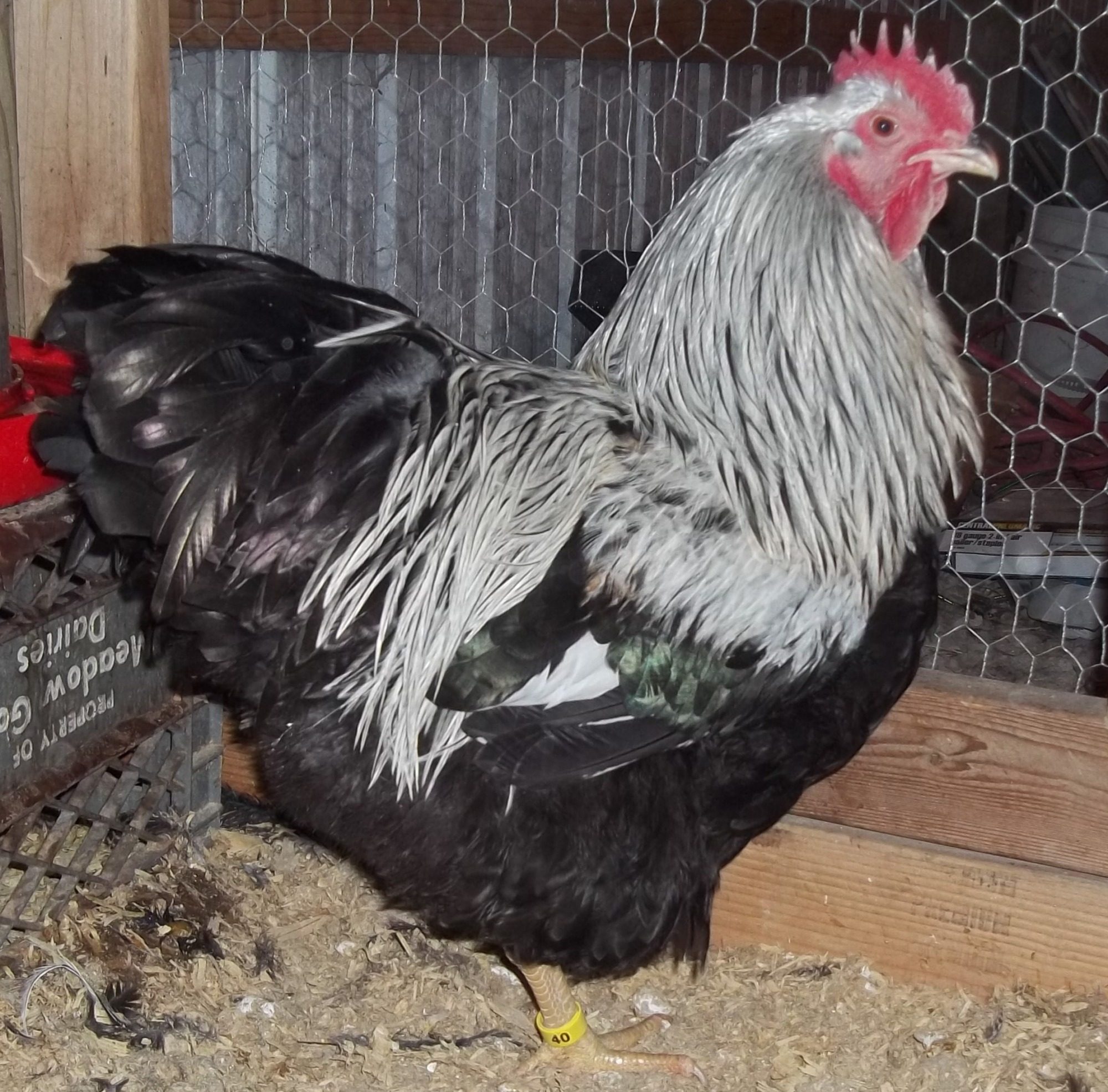I want to share a couple of pictures with y'all; these are two Silver Penciled Rocks of two different lines. I sent several pictures of each to Rip, the judge who did the class on feather quality, BEFORE he did the class (this is actually what inspired me to ask him directly about feather quality):


While neither of these males is a fantastic example of the variety, they each have some desirable traits. But, in reagard to feather quality, do you see how the male on the bottom's feathers actually look like they don't follow the countours of his body as well as the top male's? Compare the breasts & you can really see it. The bottom male's profile almost looks bumpy in the breast, while the male in the top picture's breast looks quite smooth. You can even see it when you look at the topline; the top male's is much more smooth looking, and the male on the bottom..well, although his back angle is nice (but short), you can see that his feathering is sort of ruffled looking...not tight enough (nor is the top actually, but comparing them, the top male's is tighter).
When I sent these pictures to Rip and asked him his opinion (sidebar here - though it's never a good idea to make cull decisions on feedback from pictures, sometimes you can use them as a bit of help when you don't have local folks that you trust, to go over your birds with you), he gave me his feedback, and noted that the top male has much better feather quality than the bottom one.
I just thought it was because the male in the top pic was tighter feathered, but it goes FAR beyond that when evaluating feathers. When you look at them, feathers plucked from the body actually are curved. Have you ever given thought to that? According to Rip, a feather should follow the contour of the bird's body. Too much curve, the bird look...untidy, unkemp, loose feathered. Not enough, and I think that's where that "shredded" look comes from when evaluating the tips of feathers. I also think that plays alongside the thickness/thinness of feathers (the shredding factor).
Anyway, when I saw Rip's comment on the feather quality and that he could see it FROM A PICTURE, I was shocked, and realized it is something I was very interested in learning more about. (Also, my Jersey Giant mentor has been pushing me for a couple of years to learn about it, but I honestly didn't know how to go about it.) Neat stuff, eh?
While neither of these males is a fantastic example of the variety, they each have some desirable traits. But, in reagard to feather quality, do you see how the male on the bottom's feathers actually look like they don't follow the countours of his body as well as the top male's? Compare the breasts & you can really see it. The bottom male's profile almost looks bumpy in the breast, while the male in the top picture's breast looks quite smooth. You can even see it when you look at the topline; the top male's is much more smooth looking, and the male on the bottom..well, although his back angle is nice (but short), you can see that his feathering is sort of ruffled looking...not tight enough (nor is the top actually, but comparing them, the top male's is tighter).
When I sent these pictures to Rip and asked him his opinion (sidebar here - though it's never a good idea to make cull decisions on feedback from pictures, sometimes you can use them as a bit of help when you don't have local folks that you trust, to go over your birds with you), he gave me his feedback, and noted that the top male has much better feather quality than the bottom one.
I just thought it was because the male in the top pic was tighter feathered, but it goes FAR beyond that when evaluating feathers. When you look at them, feathers plucked from the body actually are curved. Have you ever given thought to that? According to Rip, a feather should follow the contour of the bird's body. Too much curve, the bird look...untidy, unkemp, loose feathered. Not enough, and I think that's where that "shredded" look comes from when evaluating the tips of feathers. I also think that plays alongside the thickness/thinness of feathers (the shredding factor).
Anyway, when I saw Rip's comment on the feather quality and that he could see it FROM A PICTURE, I was shocked, and realized it is something I was very interested in learning more about. (Also, my Jersey Giant mentor has been pushing me for a couple of years to learn about it, but I honestly didn't know how to go about it.) Neat stuff, eh?






